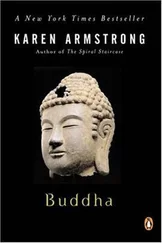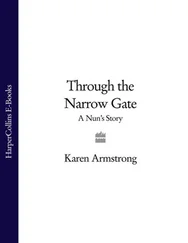Melchizedek’s god was called El Elyon, “God Most High,” a title later given to Yahweh once he had become the high god of Jerusalem. El Elyon was also one of the titles of Baal of Mount Zaphon. 25In the ancient world, deities were often fused with one another. This was not regarded as a betrayal or an unworthy compromise. The gods were not seen as solid individuals with discrete and inalienable personalities but as symbols of the sacred. When people arrived in a new place, they would often merge their own god with the local deity. The incoming god would take on some of the characteristics and functions of his or her predecessor. We have seen that in the imagination of Israel, Yahweh, the god of Moses, became one with El Shaddai, the god of Abraham. Once the Israelites arrived in Jerusalem, Yahweh was also linked to Baal El Elyon, who was almost certainly worshipped on Mount Zion.
Jerusalem does not figure at all in the stories of the Exodus of the Israelites from Egypt, which became absolutely central to their faith. The biblical account of these events has mythologized them, bringing out their spiritual, timeless meaning. It does not attempt to reproduce them in a way that would satisfy the modern historian. It is essentially a story of liberation and homecoming that has nourished Jews in many of the darkest moments of their long and tragic history; the message of the Exodus also inspires Christians who are struggling with injustice and oppression. Even though Jerusalem plays no part in the story, the Exodus traditions would become significant in the spirituality of the Israelites on Mount Zion. The incidents can also be seen as versions of the Near Eastern creation and combat myths, except that instead of taking place in primordial time they are seen to happen in the mundane world and what comes into being is not a cosmos but a people. 26The combat myths of Baal and Marduk ended with the construction of a city and a temple: the Exodus myth concludes with the building of a homeland. During these years, Israel passed from a state of chaos and nonbeing to a divinely established reality. Instead of splitting the carcass of a sea-monster to create the world, as Marduk did, Yahweh divided the Sea of Reeds to let his people escape from Pharaoh and his pursuing army. Instead of slaying the demonic hordes, like Marduk, Yahweh drowned the Egyptians. As always the new creation depended upon the destruction of others—a motif that would frequently recur in the future history of Jerusalem. Finally the people of Israel had passed through the divided waters to safety and freedom. In all cultures, immersion signified a return to the primal waters, the original element, an abrogation of the past and a new birth. 27Water thus had the power to restore—if only temporarily—the pristine purity of the beginning. Their passage through the Sea of Reeds made Israel Yahweh’s new creation.
Next the Israelites traveled to the holy mountain of Sinai. There, in the time-honored way, Moses climbed to meet his god on the summit, and Yahweh descended in the midst of a violent storm and volcanic eruption. The people kept their distance, as instructed: the sacred could be dangerous for the uninitiated and, at least in the Israelite tradition, could be approached only by a carefully instructed elite. On Mount Sinai, Yahweh made Israel his own people, and as a seal of this covenant, he gave Moses the Torah, or Law, which included the Ten Commandments, though, as we shall see, the Torah would not become central to the religious life of Israel until after the exile to Babylon.
Finally, before they were permitted to enter the Promised Land, the Israelites had to undergo the ordeal of a forty-year sojourn in the desert. This was no romantic interlude. The Bible makes it clear that the people constantly complained and rebelled against Yahweh during these years: they longed for what seemed, in retrospect, the easier life they had enjoyed in Egypt. In the Near East the desert was associated with death and primeval chaos. We have seen that Mot, the Syrian god of the desert, was also the voracious god of the Abyss, the dark void of death and mortality. Desert was thus a sacred area that had, as it were, gone awry and become demonic. 28It remained a place of utter desolation in the Israelite imagination: there was no nostalgia for the wilderness years of the Exodus, as some biblical critics have imagined. Instead, the prophets and biblical writers recalled that God had made Israel his people “in the howling wilderness of the desert”; 29the desert was “a land unsown” where “no one lives”; it was “void of human dwelling,” the land of “no-kingdom-there,” 30It constantly threatened to encroach on the settled land and reduce it to the primal no-thingness. When they imagined the destruction of a city, Israelites saw it reverting to desert and becoming once again “the plumb-line of emptiness,” the haunt of pelicans, hedgehogs, and satyrs, where there was “no man at all.” 31For forty years—a phrase that is used simply to denote a very long time indeed—the Israelites had to struggle through this demonic realm, entering a state of symbolic extinction before their God brought them home.
God had not entirely deserted his people in the wilderness, however. Like other nomadic peoples, the Israelites possessed a portable symbol of their link with the divine realm which kept them in being. Where the Australian Aborigines carried a sacred pole, the Israelites carried the Ark of the Covenant, a shrine that would be of great importance to them in Jerusalem. Most of the descriptions of the Ark in the Bible come from the later sources, so it is difficult to guess what it was originally like. It seems to have been a chest which contained the tablets of the Law and was surmounted by two golden cherubim: their outstretched wings formed the back of a throne for Yahweh. 32We know that an empty throne was often used as a symbol for the divine: it invited the god to sit among his worshippers. Henceforth the Throne would come to stand as a symbol of the divine Presence in the Jewish tradition. The Ark was thus an outward sign of Yahweh’s presence. It was carried by members of the tribe of Levi, who were the appointed priestly caste of Israel: Aaron, Moses’s brother, was the chief priest. Originally the Ark seems to have been a military palladium, since its sacred power—which could be lethal—provided protection against Israel’s enemies. J tells us that when the Israelites began their day’s march, the cloud representing Yahweh’s presence would descend over the Ark and Moses would cry: “Arise, Yahweh, may your enemies be scattered!” At night, when they pitched tent, he would cry: “Come back, Yahweh, to the thronging hosts of Israel!” 33The Ark enclosed the Israelites in a capsule of safety, as it were; it rendered the Abyss of the desert habitable because it kept them in touch with the sacred reality.
We know very little about the early life of Israel in Canaan. P believes that once they had settled in the hill country, the Israelites set up a tent for the Ark in Shiloh: P imagined Yahweh giving very precise instructions about this tabernacle to Moses on Mount Sinai. If the Ark was indeed originally enshrined in a tent, Yahweh was very like El, who also lived in a tent-shrine, was the source of law, and, when he appeared as El Sabaoth (“El of Armies”), was enthroned on cherubim. In the Book of Samuel, however, the Ark seems to have been housed in the Hekhal (or cult hall) of a more conventional temple in Shiloh. 34But Israelites seem to have worshipped at a number of other temples, in Dan, Bethel, Mizpah, Oprah, and Gibeon, as well as at outdoor bamoth . Some Israelites would have worshipped other gods, alongside Yahweh, who was felt to be a foreign deity who had not yet properly settled in Canaan. He was still associated with the southern regions of Sinai, Paran, and Seir. They imagined him leaving this territory, when his people were in trouble, and riding on the clouds to come to the help of his people: this is how he appears in some of the earliest passages of the Bible. 35The Israelites may even have developed a liturgy which reenacted the theophany of Mount Sinai, with braying trumpets reproducing the thunder and incense recreating the thick cloud that had descended on the mountaintop. These elements would also later appear in the Jerusalem cult. The ceremony thus imitated the decisive appearance of Yahweh on Sinai, and this symbolic reenactment would have created a sense of Yahweh’s presence among his people yet again. 36Unlike most of the Near Eastern gods, therefore, Yahweh was at first regarded as a mobile deity who was not associated with one fixed shrine. Yet the Israelites also commemorated their liberation from Egypt. Over the years the old spring festival was used to recall the Israelites’ last meal in Egypt, when the Angel of Death passed them by but slew all the firstborn sons of the Egyptians. Eventually, this family feast would be called Passover (Pesaḥ).
Читать дальше












